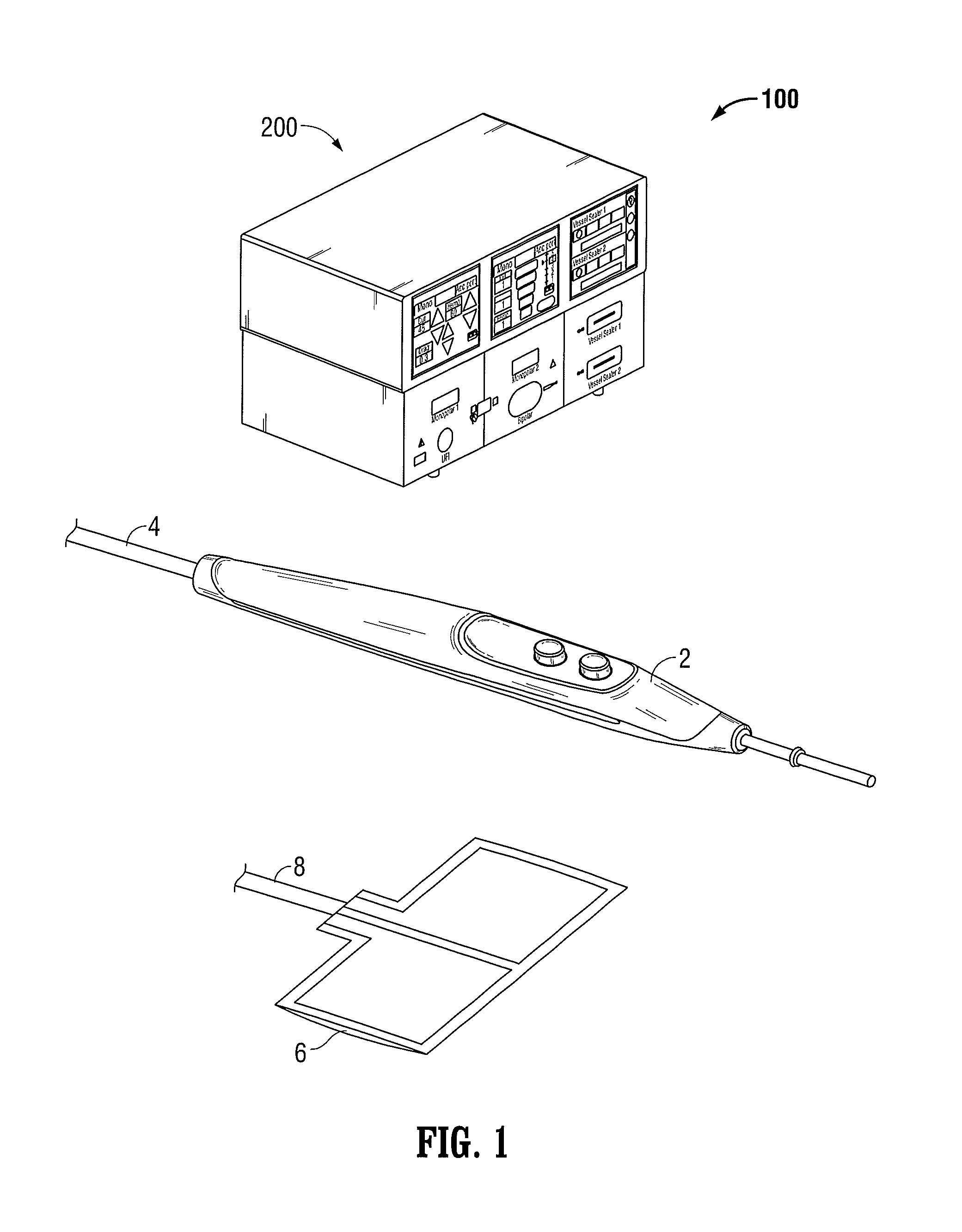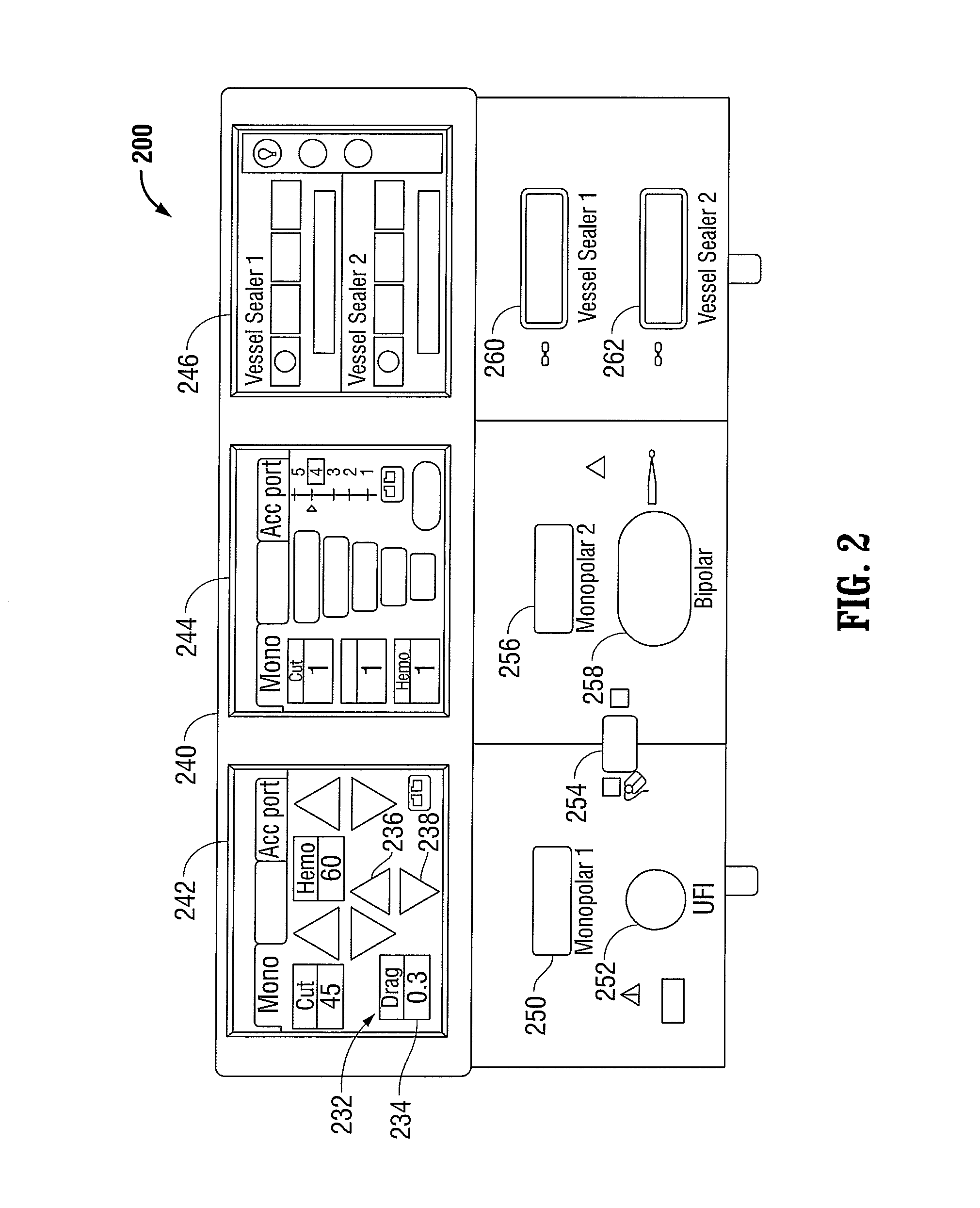Systems and methods for arc detection and drag adjustment
a technology of arc detection and drag adjustment, applied in the field of electrosurgical systems and methods, can solve the problems of limiting the speed at which the operator can move the electrode of the electrosurgical instrument through the tissue, limiting the operator's ability to more quickly and efficiently complete a surgical procedure, and limiting the operator's ability to adapt easily, so as to achieve a low drag and high drag level
- Summary
- Abstract
- Description
- Claims
- Application Information
AI Technical Summary
Benefits of technology
Problems solved by technology
Method used
Image
Examples
Embodiment Construction
[0045]Embodiments of the present disclosure are described in detail with reference to the drawing figures wherein like reference numerals identify similar or identical elements. As used herein, the term “distal” refers to the portion that is being described which is farther from a user, while the term “proximal” refers to the portion that is being described which is closer to a user.
[0046]The systems and methods of the present disclosure allow an operator to control the drag force imposed on a monopolar electro surgical instrument depending on, among other things, the skill of the operator and the different types and characteristics of tissue that are encountered by the operator during a surgical procedure. The present disclosure is directed to systems and methods for detecting arcing patterns or impedance changes and adjusting the power of the electrosurgical generator so that the drag force imposed on the blade of an electrosurgical instrument can be controlled to a user-selected ...
PUM
 Login to View More
Login to View More Abstract
Description
Claims
Application Information
 Login to View More
Login to View More - R&D
- Intellectual Property
- Life Sciences
- Materials
- Tech Scout
- Unparalleled Data Quality
- Higher Quality Content
- 60% Fewer Hallucinations
Browse by: Latest US Patents, China's latest patents, Technical Efficacy Thesaurus, Application Domain, Technology Topic, Popular Technical Reports.
© 2025 PatSnap. All rights reserved.Legal|Privacy policy|Modern Slavery Act Transparency Statement|Sitemap|About US| Contact US: help@patsnap.com



